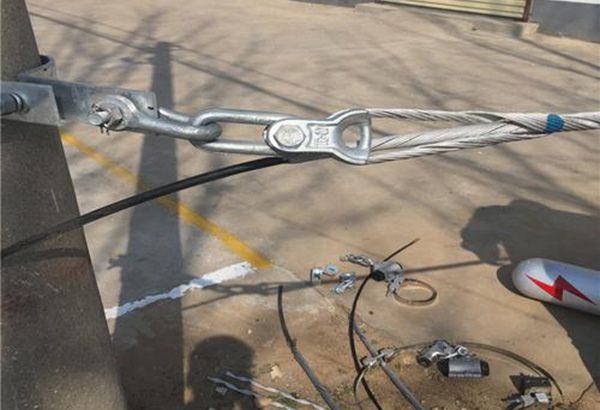Introduction: The installation of ADSS (All-Dielectric Self-Supporting) cables plays a crucial role in ensuring the reliable and efficient transmission of optical signals. To ensure a successful installation, it is essential to pay attention to several critical factors. This article highlights the key considerations in ADSS cable installation and provides insights to ensure the proper installation of these cables.
Cable Routing: Proper cable routing is crucial to avoid excessive tension and bending. ADSS cables should be installed along the approved route, taking into account factors such as clearance, span length, and vertical/horizontal alignment. Care should be taken to avoid sharp turns, obstacles, and potential damage from nearby structures or equipment.

Proper Sag Calculation: Calculating the proper sag of ADSS cables is essential to maintain the integrity and performance of the cable. Factors such as temperature, wind load, and span length should be taken into account when determining the ideal sag for the cable. Following the manufacturer's recommendations and industry standards can help ensure accurate sag calculations.
Cable Tensioning: Proper tensioning of ADSS cables is crucial to maintaining the desired sag and ensuring the cable's mechanical performance. Care should be taken to apply the recommended tensioning methods and equipment, specifically designed for ADSS cables. Tensioning should be performed gradually and evenly along the cable to prevent excessive stress or damage.
Installation of Hardware and Accessories: Proper installation of hardware and accessories is vital for the secure attachment and support of ADSS cables. This includes the installation of suspension clamps, support brackets, vibration dampers, and other required components. Following the manufacturer's guidelines and industry standards is essential to ensure the proper installation and functionality of these accessories.
Weather Conditions: ADSS cable installation should take into account prevailing weather conditions in the area. Extreme weather conditions, such as high winds, heavy rain, or snow, can impact the installation process and the performance of the cable. Installing during favorable weather conditions and taking appropriate precautions can help minimize potential risks and ensure a successful installation.
Safety Considerations: Safety should always be a top priority during ADSS cable installation. Adequate safety measures should be implemented, such as the use of proper personal protective equipment (PPE), adherence to safety guidelines and protocols, and the presence of trained personnel. Regular safety inspections and risk assessments should be conducted to identify and mitigate potential hazards.
Conclusion: Proper installation of ADSS cables is essential for their reliability and long-term performance. By paying attention to cable routing, sag calculation, tensioning, hardware installation, weather conditions, and safety considerations, installers can ensure a successful and robust installation process. Adhering to these considerations will contribute to the overall success and reliability of ADSS cables in the field.



